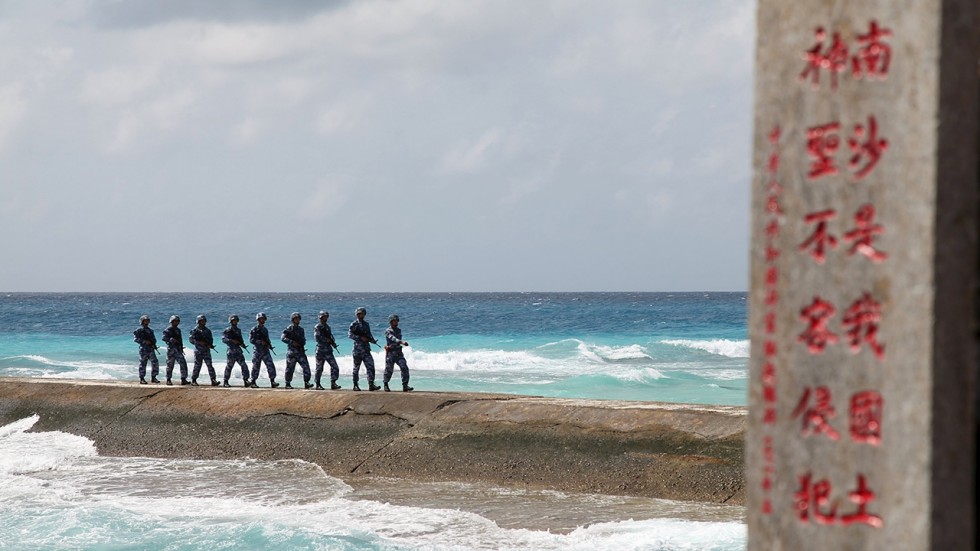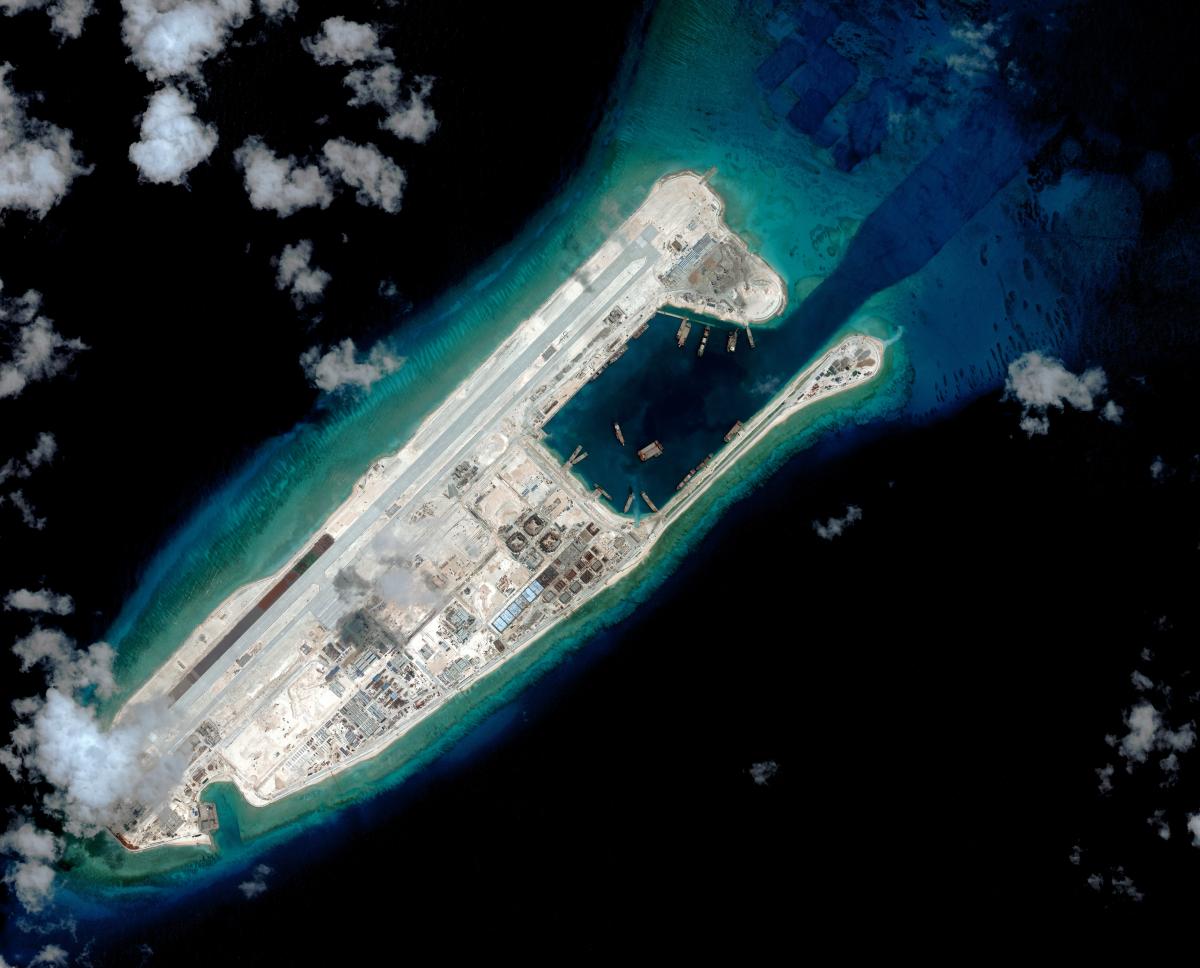
A recently revealed U.S. assessment of Chinese military capability on holdings in the South China Sea runs counter to a narrative from Beijing that weapons on the artificial islands are merely for self defense, according to the late February assessment outlined in a letter by Director of National Intelligence James Clapper and obtained by USNI News.
According to the unclassified assessment, “China will have significant capacity to quickly project substantial offensive military power to the region,” by next year which conflicts with claims made last year by China’s president and foreign minister.
Senior officials in Beijing have asserted over the last several months that China has stopped land reclamation in the Spratly Island chain in the South China Sea and would only equip the islands with only enough military firepower to defend installations on the reclaimed land and nothing more.
“Relevant construction activities that China are undertaking in the island of South — Nansha [Spratly] Islands do not target or impact any country, and China does not intend to pursue militarization,” Chinese President Xi Jinping said at the White House in September.
“We support freedom of navigation and overflight of countries according to international law and the management of differences through dialogue… We have agreed to maintain constructive communication on relevant issues.”
A month earlier, Chinese Minister of Foreign Affairs Wang Yi said China has stopped reclamation efforts in the Spratlys – the island chain of the Western coast of the Philippines.

However, those claims might not be accurate according to the unclassified assessment Clapper sent to Senate Armed Services Committee chair Sen. John McCain (R-Ariz.).
“Based on the extent of land reclamation and construction activity, we assess that China has established the necessary infrastructure to project military capabilities in the South China Sea beyond that which is required for point defense of its outposts,” read the letter.
“These capabilities could include the deployment of modern fighter aircraft, surface-to-air missiles (SAMS), and coastal defense cruise missiles, as well as increased presence of People’s Liberation Army Navy (PLAN) surface combatants and China Coast Guard (CCG) large patrol ships.”
The assessment also said that China had extended reclamation efforts past Wang’s Aug. 5 declaration that the work had ended.
On installations on Subi and Mischief reefs in the Spratlys,“between that date and late October, when reclamation activity ended, China reclaimed more than 100 additional acres of land,” read the letter.
While Clapper said the work appears to have stopped between China’s artificial holdings on Fiery Cross, Subi and Mischief, he said there could be up to an additional 1000 acres reclaimed based on the availability of the outlying reefs.
But with the land already reclaimed, the assessment said “based on the pace and scope of construction at these outposts, China will be able to deploy a range of offensive and defensive military capabilities and support increased [People’s Liberation Army Navy] and [China Coast Guard] presence beginning in 2016.
The increased logistics support for PLAN and CCG ships are of particular concern to neighboring countries near the Spratlys – the Philippines, Malaysia and Indonesia. With less time to travel for resupply, Chinese maritime assets could more easily enforce disputed maritime claims for natural resources like fishing and mineral rights.
In 2014, China sent ships to protect an offshore oil platform it sent within the economic exclusion zone (EEZ) in Vietnam. The ships prevented Vietnamese authorities from getting close to the platform and gave China defacto control of the area near its long held installations in the Paracel Island chain and bases on Hainan Island.
The concern is the installations in the Spratlys will allow Chinese forces to project similar forces for longer from the Chinese mainland.

Additionally, Clapper said while there have been no sustained deployments of high-end weapon systems on the Spratly holdings, “China has constructed facilities to support the deployment of high-end military capabilities, including modern fighter aircraft,” he wrote.
“Once these facilities [in the Spratlys] are completed by the end of 2016 or early 2017, China will have significant capacity to quickly project substantial offensive military power to the region,” he wrote.
Clapper’s assessment to McCain joins comments from Secretary of State John Kerry and U.S. Pacific Commander Adm. Harry Harris that expressed concern on China’s build up in the region.
But apart from official U.S. declaration, the increasing ease in which commercial satellite imagery has been used over the last several months by press outlets to check China on their claims has eroded Beijing’s rhetoric on its intents for its holdings in the Spratlys.
“Mr. Clapper is telling us what common sense and a lot of press has already been telling us,” Dean Cheng, an analyst specializing China at the Heritage Foundation, told USNI News on Tuesday.
“The biggest questions is: So what?”
Cheng said China has been receiving mixed messages from Washington on its South China Sea posture – a mix of concerns from officials like Kerry and Harris – but then were still invited to the U.S. Navy 2016 Rim of the Pacific (RIMPAC) exercise this summer.
“It’s one thing to know and it’s another thing do something about it,” he said.





